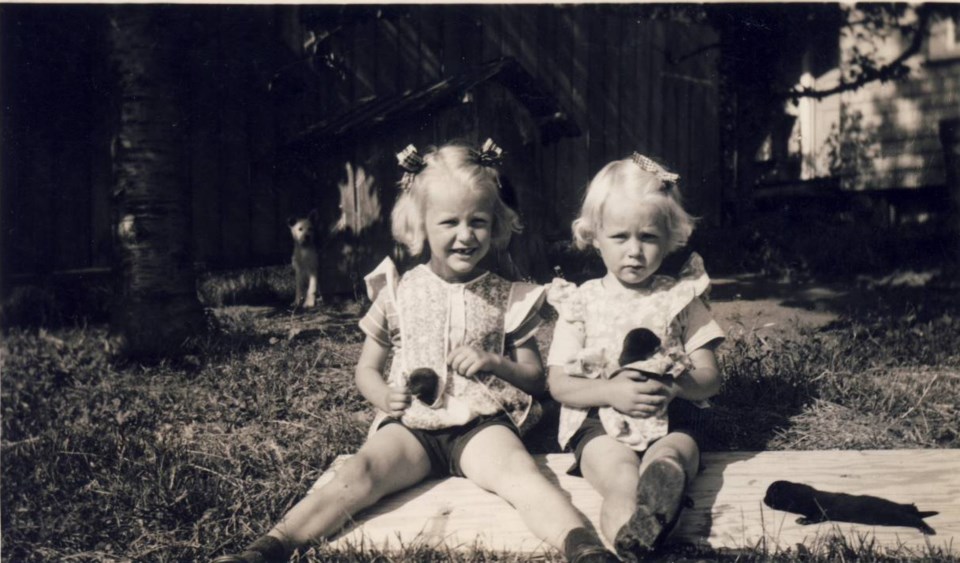For one Burnaby woman, Burnaby Mountain is much more than the home of Simon Fraser University or a place to go for a weekend stroll.
From 1942 to 1950, Maureen Olofson’s family owned one of the largest mink farms in B.C., located in the old Hastings Grove subdivision on Fourth Avenue near Curtis Street.
G.A.K. Fur Farm was a partnership between Gus Skofteby, Olofson’s father Axel and her aunt, Karin Ericksson. The property was fully equipped with a farm house, some 1,200 mink cages and a couple of guard dogs.
“That’s not a topic people want to think about today, but nevertheless, at that time, there was a real demand for mink coats, mink hats,” Olofson tells the NOW, adding the trio had no previous experience in fur farming. Her father was a carpenter, her aunt was a hair dresser and Skofteby had been a cattle farmer in Norway.
It was only later in life that Olofson learned just how successful the farm had been. She was going through an old box of photos and letters and found an article about a best-in-show fur competition.
“We entered 48 minks (for) judging, quality, and we came back with 48 ribbons. I couldn’t believe it.”
Olofson, who was four at the time, remembers life on the farm as simple. There was no electricity and no running water. Coal oil lamps and water from a well was the norm. Olofson’s mother, Kerstin, would make all the children’s clothes (Olofson had a younger sister) and would cook meals with vegetables taken from the garden.
“We had apples and pears on the property. There was blueberries and huckleberries too,” she says.
For meat, the family would buy a calf or a pig, fatten it up and then slaughter it in order to have enough protein to make it through the winter.
For fun, Olofson and her sister would let their imaginations run wild.
“We’d climb trees, we’d search for bears and try to avoid them, and play with our rabbits. We’d take them out of their cages, so they could run around,” she says.
The minks couldn’t be played with too much, she adds, because if the scent of a human hand got on the animal, the mother mink would kill the offspring.
“The only thing we could do it is put them in our clothes. We could feel them that way,” explains Olofson.
The fur business was eventually sold in 1950, and the Olofson family moved to rented homes on Sperling Avenue. In ’52, Axel sold the last of his minks and opened a sporting goods store on Hastings Street.
“There’s really no sign of the farm now. It’s just all been developed there,” Olofson says. “It’s not good, but I know that’s the way things go. Population is increasing (and) Burnaby Mountain is such a beautiful spot.”
The Olofson’s family story is one of many included in the City of Burnaby’s latest oral history project, which can be found online at https://heritageburnaby.ca/. The interviews, conducted by retired archivist Kathy Bossort, explore the Burnaby Mountain area.
“I think it’s a good idea to have a place where these artifacts and stories can be retold or listened to and appreciated because it was so different back then,” says Olofson.



